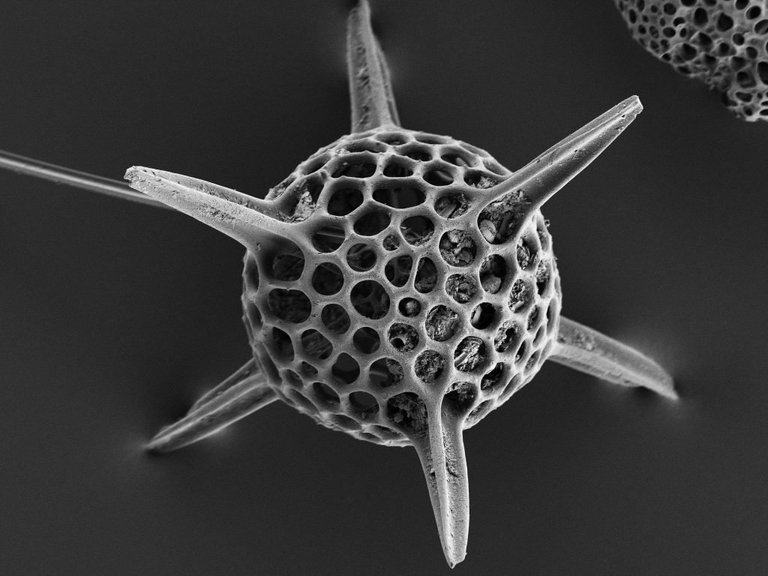Even more extensive in terms of the number of species, the group of marine sarcods than foraminifers is formed by rayers, or puu (Radiolaria).

geologyistheway
This is a separate subclass in the Sarcodidae class, numbering at least 7-8 thousand species. In addition to extant species, radiolarians are richly represented in the excavated state. This is due to the fact that most of them, like foraminifers, have a mineral skeleton. Radiolarians, like foraminifers, are exclusively inhabitants of the sea. All radiolarians are planktonic organisms
nisms. Their life takes place in a state of "soaring" in sea water. The largest number of radiolarian species is confined to tropical and subtropical waters. In cold seas, the number of their species is small.
The structure of radiolarians is complex and varied. Their whole organization bears clearly expressed features of adaptation to a planktonic way of life, which are very perfect and affect different aspects of the structure.
The sizes of radiolarians vary within a fairly wide range - from 40
50 microns to 1 mm or more. There are a few colonial forms of radiolarians, the size of which reaches several centimeters.
Let us first of all turn to the consideration of the protoplasmic parts of the body of radiolarians. Most of them have a more l and less clearly expressed spherical shape. A characteristic feature of the structure of radiolarians is the presence of a central capsule (Fig. 37).
The central capsule is a membrane consisting of organic matter and surrounding the central parts of the cytoplasm with the nucleus. The walls of the central capsule are usually penetrated by numerous small